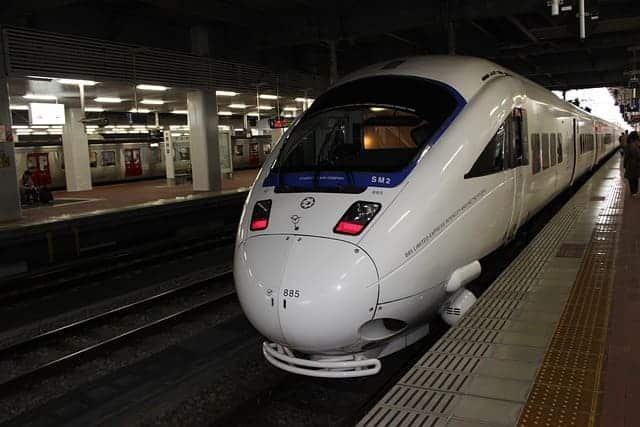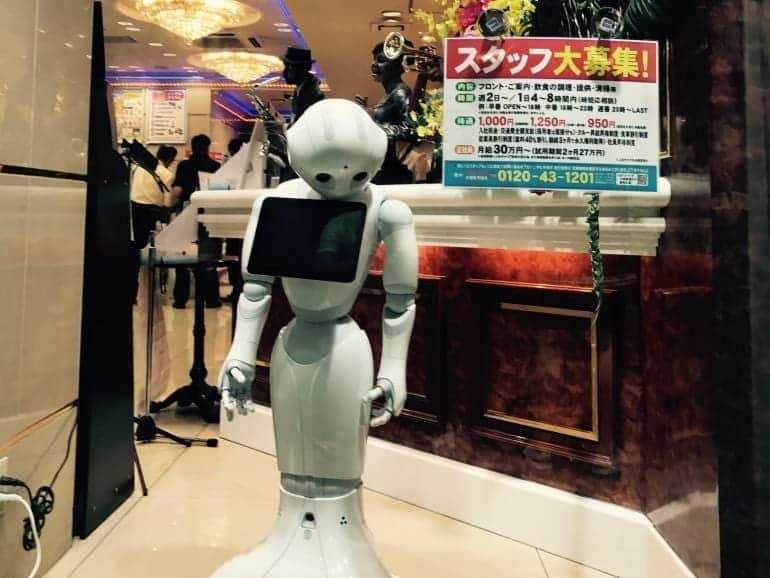Yes, robot villages in Japan where tourists can sleep actually exist—and they’re real enough to change the way you dream about travel forever. Imagine walking into a village where robots greet you, carry your luggage, serve you sushi, and even guide you to your smart bedroom. This is not some futuristic fantasy—this is happening right now in some hidden corners of Japan. These robot villages are not only tech wonders but also cozy, relaxing places where tourists can truly unwind. You don’t need to be a tech geek to enjoy them—just bring your curiosity, and you’ll leave with stories that sound like science fiction.
Let’s dive deep into the world of robot villages in Japan where tourists can sleep, explore what makes them so special, and see where exactly you can find them.

Where Are These Robot Villages in Japan Where Tourists Can Sleep?
The Rise of Smart Sleep Villages
Japan is home to a few experimental towns and remote eco-villages where automation, robotics, and AI are integrated into everyday life. These are not big, busy cities. Instead, they’re quiet retreats built around the idea of harmony between technology and comfort. You’ll find robot villages in Japan where tourists can sleep mainly in more rural or scenic parts of the country, such as:
- Kyushu – an island full of innovation hubs and warm countryside
- Nagano Prefecture – a place where smart tech meets snowy mountains
- Shizuoka – near Mount Fuji, famous for nature and robotics labs
- Fukui and Toyama – lesser-known areas quietly developing robot hospitality
These villages are often developed in collaboration with universities and tech companies, offering visitors a glimpse of what future travel could look like.
What Happens in a Robot Village?
A Day in a Robotic Paradise
You wake up in your minimal, Japanese-style room. The light curtain opens gently, programmed to follow your sleep cycle. A soft voice speaks: “Good morning. Your breakfast will arrive shortly.” No, it’s not a hotel clerk—it’s your room’s personal AI assistant.
As you step out, a small robot rolls in with a breakfast tray. It bows (yes, really), then rolls away. Outside, other guests are enjoying tea while robotic pets roam around the garden. In the center of the village, a community space shows off cooking robots, robotic storytellers, and even a robot DJ spinning lo-fi beats.

This is the daily rhythm of robot villages in Japan where tourists can sleep. It’s not about replacing humans—it’s about making life smoother, quieter, and strangely cozy.
Practical Things You Can Actually Do
- Robot Hot Springs: Some villages have traditional onsen with robotic cleaning systems, automated towel delivery, and smart temperature settings.
- Sleep Optimization Rooms: Your bed adjusts its firmness based on your movements. The room monitors air quality and noise, tweaking settings to give you perfect sleep.
- Tech Cooking Classes: Want to learn to make sushi with a robot chef? You can. These classes are interactive, fun, and you get to eat your results.
- Night Walks with AI Lanterns: In some places, you can take evening walks guided by voice-responsive robot lanterns that light up paths and share folk tales.
- Robot Garden Tours: Guided by rovers equipped with sensors, you can explore eco-farms where machines and plants grow together.
Why Tourists Love Sleeping in These Robot Villages
It’s Not About Gadgets—It’s About Peace
One of the biggest surprises about robot villages in Japan where tourists can sleep is how calm they feel. These aren’t loud, busy tech zones. They’re quiet, green, and designed for peace. The robots do all the heavy lifting—literally. You, as a tourist, just relax.
There’s something magical about being in a village where things just… work. Your door unlocks with a smile, your tea brews itself, your slippers are waiting at the door without anyone moving them. It’s a bit like staying in a dream.
Who Should Go?
- Couples looking for a weird and wonderful escape
- Solo travelers who want to relax in a futuristic space
- Families who want kids to experience safe, smart tech
- Writers, artists, and digital nomads who want quiet and inspiration
- Tech lovers who want to live in the future—today
Where to Book These Robot Villages in Japan Where Tourists Can Sleep
1. Henn-na Village, Kyushu
One of the first known robot hotels expanded into a full smart village in southern Japan. Here, everything is automated—check-in, room service, and even entertainment. You’ll find quiet gardens, robot waiters, and even a dinosaur at reception. Weird? Yes. Worth it? Absolutely.
- How to get there: Fly to Nagasaki, then take a 45-minute train to the town
- Cost: Around ¥9,000 per night ($60 USD), breakfast included
- Best for: First-timers who want a fun intro to robotic living
2. Ainomura Tech Eco-Village, Nagano
A secretive, experimental village built with the help of Nagano’s university tech departments. It’s small, only 12 guest rooms, but every detail is smart—from solar-powered bots to automated kitchens.
- How to get there: Bullet train to Nagano, then shuttle bus
- Cost: ¥12,000 per night ($80 USD)
- Best for: Travelers who love mountains and peace
3. Shizuoka Robo-Stay Zone
Just below Mount Fuji, this robot village includes capsule sleep pods, vending machine chefs, and robotic farmers. You can sleep while a machine gently adjusts your posture every hour.
- How to get there: Take a local train from Tokyo (~2 hours)
- Cost: ¥7,000–¥10,000 per night ($50–$70 USD)
- Best for: Digital detoxers and sci-fi fans
4. Fukui’s Silent Sleep Project
A sleep-focused robot village with AI beds, robotic massage chairs, and guided meditations hosted by animated holograms. There’s even a sleep study lab where you can volunteer and get paid.
- How to get there: Take a train from Kyoto (~1.5 hours)
- Cost: ¥11,000 per night ($75 USD), discounts for longer stays
- Best for: People who have trouble sleeping or want to reset their body clock
What’s It Like to Sleep in a Room Run by Robots?
Cozy, Quiet, and Very Weird—in a Good Way
Most of the rooms in robot villages in Japan where tourists can sleep are small, Japanese-style minimalist spaces. They have futons, tatami mats, warm lighting, and robotic assistants built into the walls or furniture.
You might hear soft music controlled by an algorithm that reacts to your mood, you don’t need to turn off lights—they know when to dim and you don’t call the front desk for water—a small cube rolls in with a bottle. You can even request lullabies in five different languages.
Sleeping in these villages feels like being in a gentle science fiction movie, where everything is tuned to your comfort and rhythm.
Are Robot Villages Safe?
100% Yes—and Even Safer Than Many Hotels
In fact, robot villages in Japan where tourists can sleep are known for their extreme cleanliness and safety. Most robots are designed with multiple safety sensors, stop automatically if a person is nearby, and have backup systems. Your personal data is protected with advanced encryption, and there’s always a human staff member somewhere in the background—just in case.
It’s also great for people who prefer minimal human interaction, especially travelers who just want to unwind in peace.
What to Pack for a Stay in a Robot Village
Here’s what you really need:
- Wi-Fi devices or apps to control room functions (some villages have apps to customize lighting, meals, and sleep cycles)
- Translator apps if you’re not fluent in Japanese (though most robots speak English too)
- Comfortable clothes for lots of indoor relaxing
- Power banks and adapters
- A curious mindset—this is not your average hotel stay
When’s the Best Time to Visit?
Robot Villages Work Best When It’s Quiet
For the best experience, go during these months:
- March to May – beautiful weather, cherry blossoms, not too crowded
- October to November – crisp air, autumn leaves, peaceful vibes
- Winter (Dec–Feb) – especially in Nagano or Fukui, where robot heaters keep rooms perfectly warm
Avoid national holidays like Golden Week (late April–early May) when everything gets crowded and more expensive.
Final Thoughts
Robot villages in Japan where tourists can sleep are not a gimmick—they are the future of travel. These villages offer something you can’t get in any hotel chain: the feeling of living in another world, one where peace, sleep, and smart machines go hand-in-hand. You’ll laugh, you’ll rest better than ever, and you’ll probably never forget it.
This is your chance to step into a village run by code, powered by innovation, and wrapped in the beauty of Japanese hospitality. So next time you ask yourself where to go next, remember—robot villages in Japan where tourists can sleep are not just real, they’re waiting for you.
people also ask: Secret Japanese islands for tourists that are safer than Europe.
check also: Is China Cheap to Visit?

